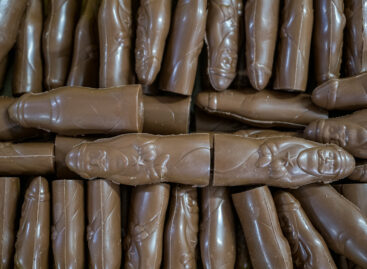Magazine: Dolce vita
This year the Association of Hungarian Confectionery Manufacturers celebrated its 25th anniversary. President Sándor Sánta told: they have 25 members that are responsible for more than 85 percent of Hungary’s sweets production. While back in 2006 the proportion of chocolate figures made from real chocolate was hardly above 50 percent, today their market share is 93 percent.

Sándor Sánta
president
Hungarian Confectionery Manufacturers
An ever-larger selection of sweets satisfying special needs are available to consumers, such as gluten-, sugar- and lactose-free and paleo products. One of the biggest conquests was that of gifts: basically every brand came out with Easter/Christmas confectionery packs that contain some kind of valuable gift, e.g. a plush figure. Value sales are growing in the market, but volume sales are decreasing a little. This probably means that consumers have started buying less confectionery, but the products they purchase are of higher quality.
Hungarians got to like dark chocolate: while in 2012 only 27 percent of consumers said that they prefer dark chocolate, today this proportion is already 34 percent. At the moment there are two major trends: the conquest of artisan chocolates and the growing popularity of ‘healthy’ chocolate. Although 54 percent of people still think that sweets aren’t supposed to be healthy, they should just taste good, one of the confectionery industry’s fastest-growing segments is healthy products.
In the last three years there were three things that made the situation of confectionery manufacturers more difficult: in 2011 the government introduced the public health product tax, in 2013 Hungary was the first in Europe to regulate the trans fatty acid (TFA) content of products and last year – together with other EU member states – Hungary signed an agreement, making a pledge that sweets manufacturers will cut the added sugar content of products by 10 percent until 2020. //
Related news
Timeless flavours, new expectations
🎧 Hallgasd a cikket: Lejátszás Szünet Folytatás Leállítás Nyelv: Auto…
Read more >Tradition and innovation characterize this year’s Christmas candy market
🎧 Hallgasd a cikket: Lejátszás Szünet Folytatás Leállítás Nyelv: Auto…
Read more >Halloween Fuels Pumpkin And Sweet Sales In Europe
🎧 Hallgasd a cikket: Lejátszás Szünet Folytatás Leállítás Nyelv: Auto…
Read more >Related news
How do young adults celebrate?
🎧 Hallgasd a cikket: Lejátszás Szünet Folytatás Leállítás Nyelv: Auto…
Read more >Vajda-Papír celebrates Ooops!’s 15th anniversary with a hybrid AI campaign
🎧 Hallgasd a cikket: Lejátszás Szünet Folytatás Leállítás Nyelv: Auto…
Read more >Pre-holiday shopping at up to half price
🎧 Hallgasd a cikket: Lejátszás Szünet Folytatás Leállítás Nyelv: Auto…
Read more >






